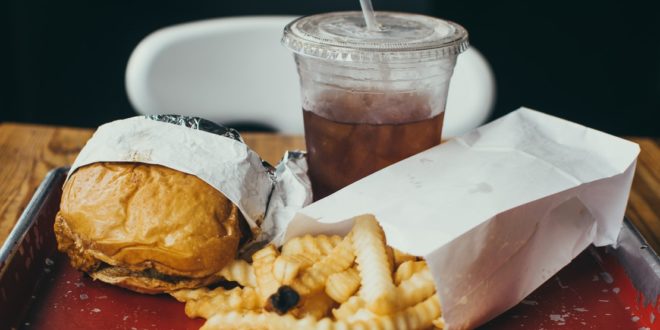There is a lot of talk about metabolism, and when you think about it we generally think about our weight. If we have a slow metabolism we are overweight, if it’s fast we are slim.
Well there is a lot more to the equation and although some people do have faster or slower metabolisms, there is no point dwelling on the fact you believe you have been dealt a bad hand.
It’s no different to someone being taller, or shorter than you, or has bigger or smaller feet than you. It is what it is, and you have to deal with it. We all want we can’t have. Its human nature.
What is metabolism? Well, metabolism is simply the all the chemical reactions to maintain your life. It’s how we use energy from food to run our body. So if you are inactive then your metabolism will be slower. If you’re more active it will be faster.
Just like a car, if you drive everywhere fast you’ll burn up more fuel than if you drove conservatively. We do have a metabolism set point called BMR, but really drive our own metabolism’s speed by our actions.
What affects metabolism?
The way we use energy can be broken down into four parts and form our Total Energy Expenditure or (TEE) which is the amount of calories we burn in one day.
1. Basal Metabolic Rate (BMR)
This is the amount calories our bodies use at complete rest and accounts for approximately 60% of TEE in sedentary individuals. Think of a car just idling. It’s the amount of fuel used when it’s not driving, accelerating or slowing down.
There are a ton of calculators out there to determine this, but one of the best in the Mifflin Equation. (Mifflin – St Jeor Formula)
Men – 10 x weight (kg) + 6.25 x height (cm) -5 x age (y) +5
Women – 10 x weight (kg) + 6.25 x height (cm) -5 x age (y) -161
If you aren’t good at maths just type in Mifflin calculator to Uncle Google, and there are loads out there you can type your details in and you’ll get an answer…in calories.
Now this simply gives you a ball park figure of the amount of calories you use on any given day. Your BMR maybe faster or slower than this. But it’s a good place to start.
If you are active you can multiply the BMR calories by your activity level (TEA) or Thermic Effect of Activity.
So BMR (Cals) x Whatever you are.
Sedentary = BMR x 1.2 (little or no exercise, desk job)
Lightly active = BMR x 1.375 (light exercise/ sports 1-3 days/week)
Moderately active = BMR x 1.55 (moderate exercise/ sports 6-7 days/week)
Very active = BMR x 1.725 (hard exercise every day, or exercising 2 x s/day)
This will give you the amount of calories you need per day.
2. Thermic Effect of Food (TEF)
TEF is the amount of energy used when digesting, absorbing, and storing food and nutrients. This accounts for about 10% of TEE. Yes, eating and digesting burns calories. So there is no need to starve yourself.
What’s really interesting is that diets higher in protein speed up our metabolism because it’s hard for our bodies to digest. In fact 20 – 30% of calories from the protein we eat (lean meats etc) are used in digestion. So if you ate 100 calories of protein, 30 calories of that 100 would be used in digestion. This is compared to that of carbs which is 5 -15% and Fat which is 0.5%.
3. Thermic Effect of Activity (TEA)
Is the amount of calories burned during deliberate exercise or active sports. So if you are a gym-goer and burn 600 cals off, then this equates to your TEA.
4. Non-Exercise Activity Thermogenesis (NEAT)
Is just movement outside of the gym and day to day living such as walking the dog, climbing your stairs, fidgeting, etc.
This is often overlooked and people who go to the gym to lose weight, but are then sedentary for the rest of the day outside that hour of exercise, just won’t get the results they want.
Think of trying to use up all the fuel in your car as quickly as you can.
If you drive your car on the motorway for an hour then letting it idle for the rest of the day you’ll be left wondering why you still have nearly a full tank of fuel left. But, if you were to drive around town, or go for short drives multiple times a day the fuel would run out faster.
It’s no different for us. Get up and have regular walks, use the stairs and you will burn off more calories. Speeding up your metabolism.
Exercise-related Activity Thermogenesis may range from 0% of TEE in sedentary individuals to as high as 10% of TEE in active adults. NEAT accounts for the remainder of the TEE and leaves huge room for increasing TEE.
However the older we get the slower our BMR gets, and men usually have a higher BMR than women.
So we know our BMR declines as we age and that’s just the way things are. Just like an old car will deteriorate over time. But if you look after it, use it, clean it, service it then it will last a lot longer than if you did nothing to it.
Our bodies are no different.
What happens as you age?
Generally as we age a perfect storm of things happen and our metabolisms slow down a lot and we can gain a lot of excess weight.
1. We become less active, but we continue to eat the same amount of food. Therefore we take in the same amount of calories but we are less active. So those extra calories get stored as fat. What we need to do, it eat more nutrient dense food, which usually has lower calories.
Then we start to lose muscle mass because we aren’t exercising which again means we need less calories so we gain more weight. (In fact we lose 3% to 5% of our muscle mass each decade after age 30 unless we exercise with weights)
Then we feel less like doing anything because we are heavier and don’t have the muscle strength or cardiovascular capacity to do anything.
So this cycle is hard to get out of and you succumb to the middle aged spread, lifestyle related diseases and we blaming it on a slow metabolism and our age….which is true and now you feel old!
But age is a number!
Can you stop it?
YES YOU CAN!
Now you will age, but you don’t have to be old, and these four steps are going to help you skyrocket your metabolism and rid yourself of that middle-aged spread!
1. Change up your nutrition, start adding protein to your diet, about a palm size portion of protein to each main meal. And opt for higher protein snacks.
2. Start Exercising with Weights – Because as we age we need to maintain our muscle strength just to (A) Make sure we are as strong as possible to go about our daily life and (B) To help increase our metabolism through extra activity and extra muscle. By changing your body Composition – Having more muscle on our bodies lends itself to increasing our metabolism, simply because muscle is an active tissue and requires energy to be maintained. Fat on the other hand requires no calories to maintain.
3. Increase your NEAT – Take the stairs, walk to the shops, park a little further away from your destination. More activity translates to more energy burned & more energy to live. You’ll also sleep better.
4. Sleep quality Is extremely overlooked. And it has a major effect on your metabolism. If you are always tired you aren’t able to regulate your appetite. Leptin, inhibits appetite and increases energy and Ghrelin increases appetite and reduces energy expenditure.
So if you are tired Leptin can drop by 18% and Ghrelin increases by 28% meaning you will be low on energy and hungry. Then you will crave high energy foods.
In a nutshell, your metabolism will slow as you age but you have more control than you think in increasing it.
I have trained so many people between 40- 50 years old as part of my Growing Younger Programme, and I have seen massive increases in strength, fat-loss and energy levels with simple lifestyle changes. You can absolutely speed up your metabolism! You don’t have to accept it.
All these people report having more energy, more confidence and feel like they’ve had a new lease of life.
And you can too, if you take what I have just said and put it into action today I promise that you will report the same things.
Gavyn Berntsen
Start Afresh Personal Training and Co-creator of the Growing Younger Programme












Join the Discussion
Type out your comment here:
You must be logged in to post a comment.